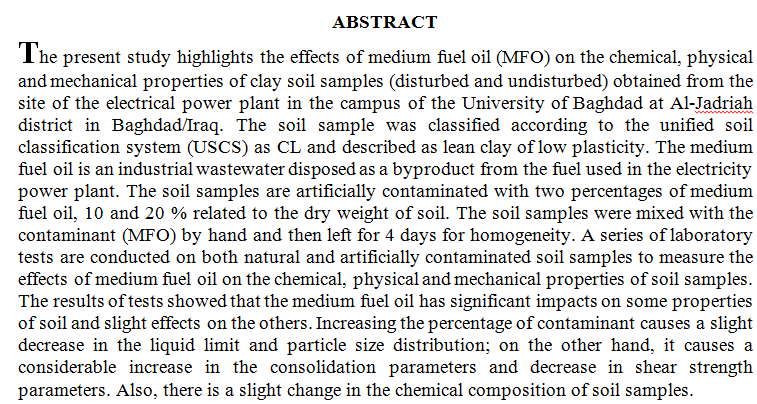
Oil flow lines are used to transport oil and its derivatives from a well over long distances, and because oil wells produce other potentially corrosive products, such as carbon dioxide and Hydrogen sulfide, it is necessary to take methods to protect the pipeline from corrosion. One of these methods is the use of corrosion inhibitors in this study. Prepare 5-acetyl-2-anilino-4-dimethylaminothiazole and test it as a corrosion inhibitor on a sample of the Rumaila flow line at a constant temperature 25°C in (3.5%) NaCl and (3.5%) KCl solution in the absence and presence of different concentrations of inhibitor (0 mM, 0.01 mM, 0.03 M, 0.05 mM). by using liner polarization (Tafel slope). The inhibiter exhibited the best performance at hi
... Show More (2)
(2)
In the present work, poly methyl methacrylate (PMMA) doped with Rhodamine 6G was prepared. The spectral properties (absorption and fluorescence) of the films were studied at different concentrations (1x10-5, 2x10-5, 5x10-5, 7x10-5, and 1x10-4mol/l). The investigated samples were made in the form of thin films. This was achieved by dissolving a certain weight of PMMA in a fixed volume of chloroform, composite films was with thickness (25.8μm) at room temperature. The achieved results were pointed out that absorption and fluorescence spectra have taken a wide spectral rang so when increased the concentratio
... Show More (5)
(5)
 (4)
(4)
 (9)
(9)
 (3)
(3)
 (1)
(1)
 (23)
(23)
 (22)
(22)
In the present work, the efficiency of Tri-octyl Methyl Ammonium Chloride (TOMAC) ionic liquid was investigated as new and green demulsifier for three types of Iraqi crude oil emulsions (Nafut Khana (NK), Kirkuk and Basrah). The separation efficiency was studied at room temperature and by using microwave heating technique. Several batch experiments were done to specify the suitable conditions for the emulsification and demulsification which were specified as 45 minutes and 3000 rpm for crude oil emulsification while the ionic liquid doses were (500,300,150,50) ppm and the conditions of microwave heating were 1000 watt and 50 second as irradiation time. The results were very encouraging especially for NK and Kirkuk crude oil emulsions whe
... Show More (9)
(9)
 (8)
(8)
The different parameters on mechanical and microstructural properties of aluminium alloy 6061-T6 Friction stir-welded (FSW) joints were investigated in the present study. Different welded specimens were produced by employing variable rotating speeds and welding speeds. Tensile strength of the produced joints was tested at room temperature and the the effecincy was assessed, it was 75% of the base metal at rotational speed 1500 rpm and weld speed 50 mm/min. Hardness of various zones of FSW welds are presented and analyzed by means of brinell hardness number . Besides to thess tests the bending properties investigat
... Show More